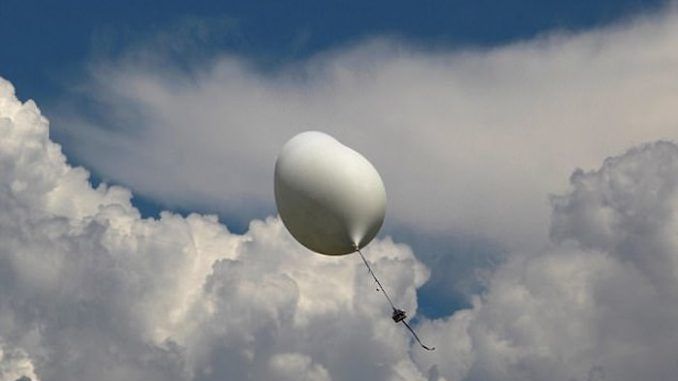
NASA and Montana State University are to send huge quantities of deadly of bacteria into the stratosphere during the eclipse on Monday. But don’t worry – according to those working on the project, it is all being done in the interests of ‘science.’
Several team across the America will launch 100 ‘dirty balloons’ during the Aug. 21 total solar eclipse loaded with highly resistant bacteria, capable of killing humans. They will float 85,000 feet in the air, and each balloon will have cameras for video and photos, as well as a GPS tracker.
Sputniknews.com reports: This endeavor is part of the Eclipse Ballooning Project, which will help researchers prepare for a Mars trip.

BYPASS THE CENSORS
Sign up to get unfiltered news delivered straight to your inbox.
You can unsubscribe any time. By subscribing you agree to our Terms of Use
Over 30 of the balloons will also carry a highly resilient strain of bacteria called Paenibacillus xerothermodurans attached to aluminum “coupons.” Scientists are hoping to discover how the bacteria will react in the surface atmosphere on Mars.
“We have to be extremely careful that we don’t bring bacteria or other tiny Earth organisms to other planets,” project leader and Director of the Montana Space Grant Consortium Angela Des Jardins, told Gizmodo.
“While most of these tiny forms of life that exist in abundance around us won’t survive the trip through space, it’s understood that some resilient types could ‘go dormant’ on the trip and then survive on the surface of the other planet. Therefore, in order to be prepared to keep planets we visit absolutely pristine, it’s important to understand how bacteria might behave there.”
The balloons will also carry cameras to capture videos of cloud formations during the solar eclipse. Some of the balloons will also have weather stations called radiosondes attached to them so that researchers can identify how earth’s atmosphere changes during an eclipse.
“We anticipate having high-quality video and images back from the balloons flights within a day or two,” Jardins said.
“Analysis of the bacteria experiment will be done by scientists at Cornell and it will likely be a month or two before results are ready. Analysis of the atmospheric response to the eclipse (from our special set of weather balloons) will similarly take a month or two.”
So, it seems like researchers are ready to gain lots of knowledge from the solar eclipse taking place in a couple days. Wondering how you can benefit from the balloon experiment? Well, NASA will be livestreaming the eclipse on the internet using its balloon cameras. Now, that’s an interesting vantage point you can brag to your friends about.

